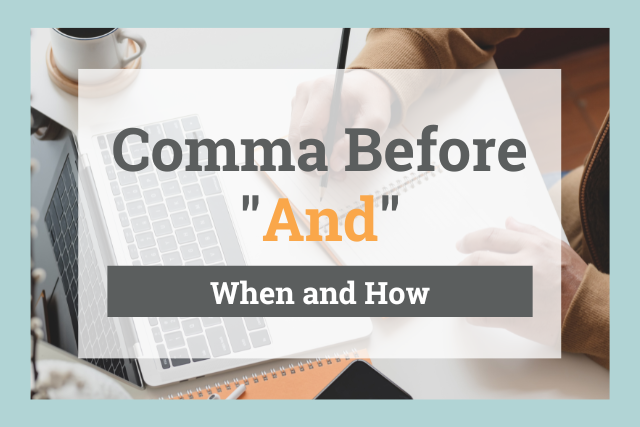
Like many English comma rules, whether or not you use a comma before "and" depends on the situation. There are two instances when you should use a comma before "and."
First, use a comma when "and" joins two independent clauses. You can also use a comma when "and" precedes the last item in a list. This is called an Oxford comma.
Today, we're taking a closer look at the rules about using a comma before "and" in sentences.
If your comma skills are rusty, you can always use ProWritingAid's free grammar checker to find all your misplaced and missing commas.
Do You Put a Comma Before "And"?
There are two main instances when you should put a comma before "and" in a sentence. Let's dive into each rule in more detail.
Comma Before "And" When Joining Independent Clauses
To understand how to use a comma before "and," you need to understand the difference between independent clauses and dependent clauses.
An independent clause is a statement that can stand alone as a complete sentence. Independent clauses always have a subject, a verb, and express a complete thought.
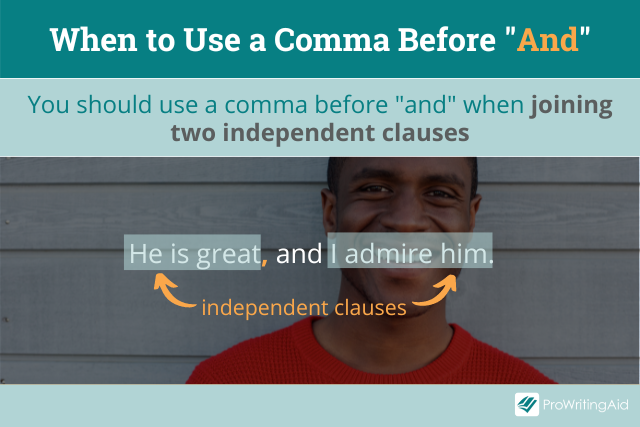
A dependent clause is a statement that cannot stand alone as a complete sentence. It may have a subject and a verb, but it is an incomplete thought.
Coordinating conjunctions can link two independent clauses. The seven coordinating conjunctions are: for, and, nor, but, or, yet, so.
When "and" combines two independent clauses, you should use a comma before “and.” This rule applies to any coordinating conjunction that joins two independent clauses.
Correct: He is great, and I admire him.
Incorrect: He is great and I admire him.
Both clauses can stand alone as a complete sentence. We could say, "He is great. I admire him." We used "and" to join the independent clauses, so we put a comma before "and."
It's important to note that you should only use a comma to join independent clauses if a coordinating conjunction like "and" is present.
If you combine two independent clauses with just a comma and no conjunction (e.g. He is great, I admire him.), this is called a comma splice. It's grammatically incorrect.
Comma Before "And" in a List
The other situation where you should place a comma before "and" in a sentence is in a list. The Oxford comma, also called a serial comma, precedes "and" before the last item in a list.
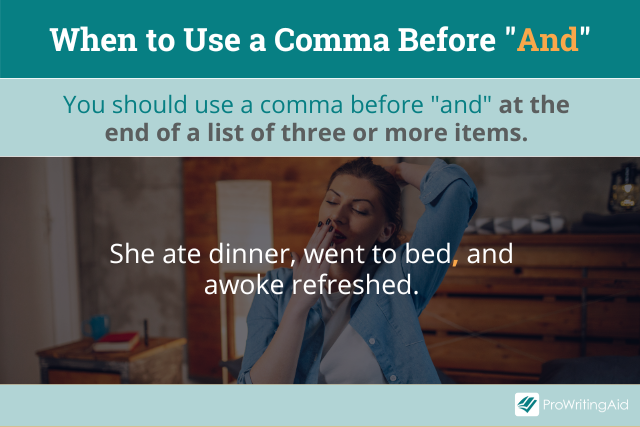
To use an Oxford comma, there should be three or more items in a list. If there are only two items, you do not need a serial comma before "and."
Correct: She ate dinner, slept all night, and awoke refreshed.
Incorrect: She ate dinner, and awoke refreshed.
The Oxford comma is grammatically correct, but it is not required. It used to be more common not to use it, but it's become the preferred comma usage.
If you prefer to write a list without the Oxford comma, that's fine. However, you should check any style guides if you're doing business or technical writing.
The important thing is to be consistent with your serial comma usage. Don't use the Oxford comma part of the time and leave it out the rest.
ProWritingAid's Consistency Report will help make sure you are sticking with one rule or the other.
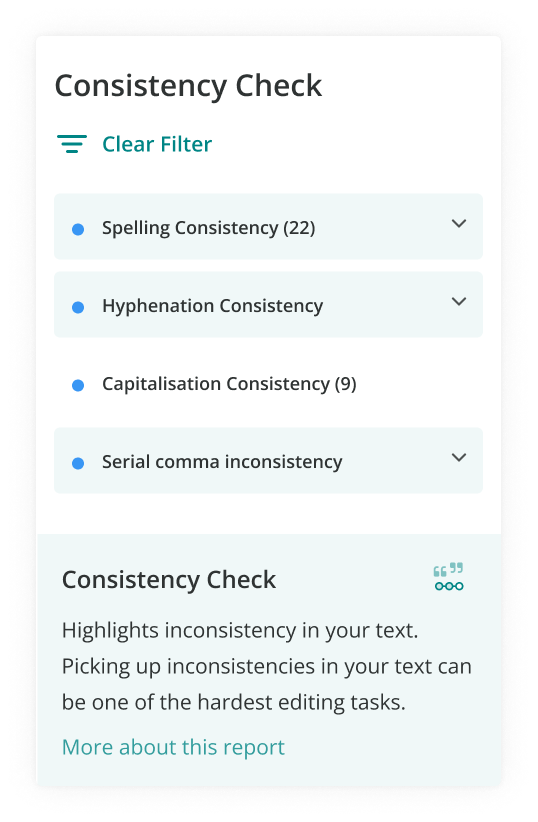
Comma Before "And More"
You can also use an Oxford comma before "and more" if your list ends with this phrase. In these situations, "more" acts as the last item in a list.
Let's look at an example of how this might look.
- The rehearsal dinner included tacos, enchiladas, elote, frijoles charros, and more.
However, the comma before "and" is optional because it is a serial comma.
Do You Put a Comma After "And"?
If you use a comma with "and," it should always precede the word "and." You should never put a comma after the word "and."
This rule applies to both independent clauses joined by "and" and lists of three or more items, as well as any other time "and" might appear in a sentence.
It also applies to all other coordinating conjunctions; you should never put a comma after a coordinating conjunction.
Correct: We met for lunch, and we spent two hours chatting at the restaurant.
Incorrect: We met for lunch and, we spent two hours chatting at the restaurant.
Correct: My pets include two rats, three hamsters, and a ferret.
Incorrect: My pets include two rats, three hamsters and, a ferret.
Remember, commas can precede "and" but can’t follow it.
When Shouldn't You Use a Comma Before "And"?
You should only use a comma before "and" in a list or when joining two independent clauses.
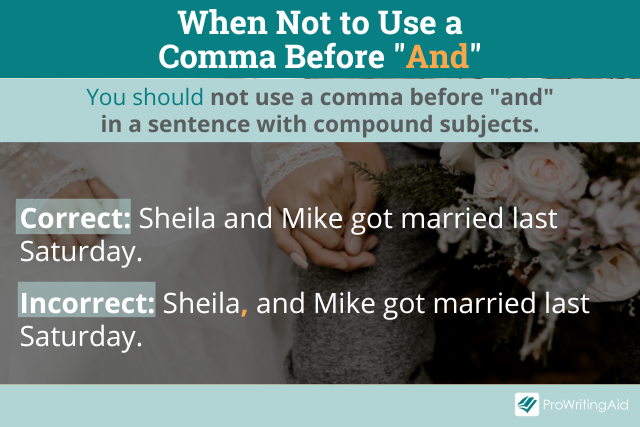
"And" sometimes joins an independent clause with a phrase that isn't a complete thought. This incomplete thought usually takes the form of either a compound subject or a compound predicate.
When this happens, do not use a comma before "and."
Here's an example of "and" in a compound subject:
Correct: Sheila and Mike got married last Saturday.
Incorrect: Sheila, and Mike got married last Saturday.
Sheila and Mike are both subjects, so this is a compound subject. No comma is required.
Now, let's look at an example of a compound predicate that uses "and."
Correct: The baby drank a bottle and went to sleep.
Incorrect: The baby drank a bottle, and went to sleep.
In this example, "went to sleep" is not a complete thought. There's no subject, so it's not an independent clause and therefore does not require a comma.
Examples of Comma Before "And" in Sentences
Here are a few more examples of how to use a comma before "and" in a sentence.
- A librarian can recommend a good book, and they can also help you with research.
- Lavender plants smell great, and they also repel mosquitos.
- After work, I went to the grocery store, the post office, and the gas station.
- Christy got gift cards, a bottle of wine, bath bombs, and new shoes for her birthday.
Comma rules can be tricky because there are so many scenarios where we need this versatile punctuation mark.
Just remember that you should only put a comma before "and" when joining two independent clauses or in a list of three or more things.


